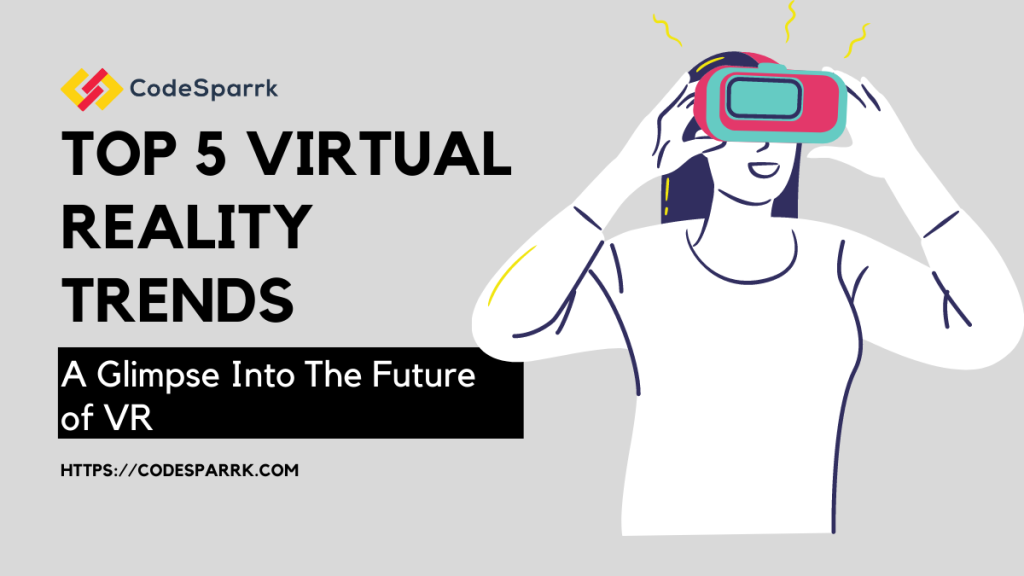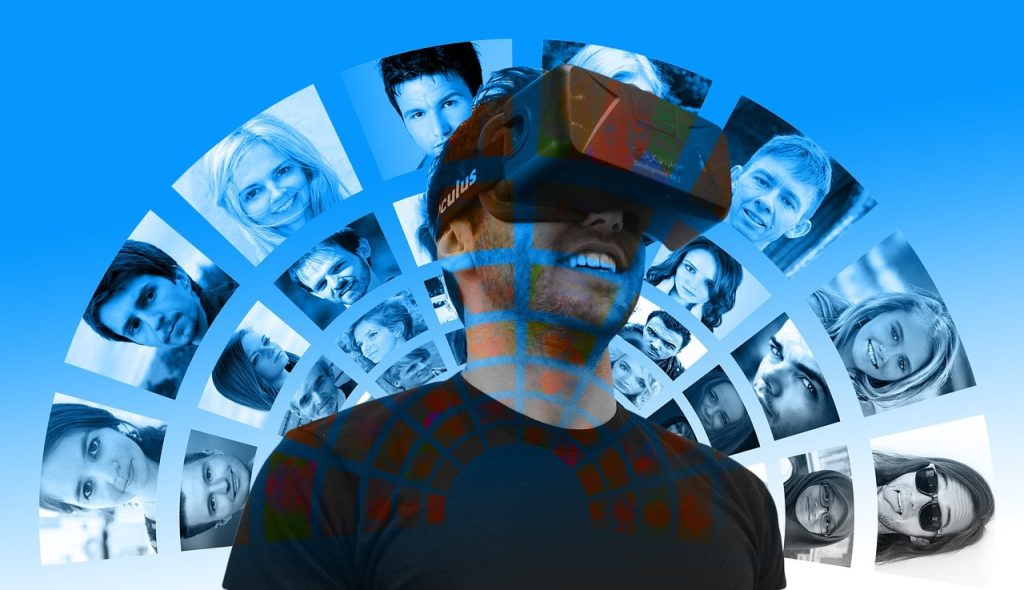Need A New App?
We build your dream app from conception to completion!
Leave Your Details and We’ll Get Back to You!
Playback speed:

Virtual reality (VR) is a rapidly growing technology that is transforming the world. From gaming to entertainment and healthcare, VR has applications in a wide variety of fields. But what does the future of VR hold? In this blog post, we’ll explore the top 5 virtual reality trends of 2023 and how they will shape the future of virtual reality.
Virtual reality (VR) is a computer-generated environment that can be experienced through the use of a headset or other special equipment. When you wear a VR headset, you’re immersed in a three-dimensional world with visuals, audio, and sometimes even haptic feedback. VR can be used for gaming, entertainment, education, healthcare, and more.
The VR industry has been growing rapidly in recent years, with the global virtual reality market estimated to reach $44.7 billion by 2023. This growth is being driven by advances in technology, such as improved resolution and graphics quality, as well as the increasing availability of content. As the technology continues to evolve, here is a look at the top 5 virtual reality trends of 2023.

Augmented reality (AR) is a technology that combines the physical world with digital elements. It overlays virtual images onto the real world, creating an immersive and interactive experience. AR has been used in gaming and entertainment for some time now, but its applications are growing rapidly.
In 2023, AR will become even more prevalent in the consumer market, with more companies offering interactive experiences through the use of AR technology. For example, Apple and Google are both investing heavily in AR, with the goal of bringing AR capabilities to their mobile devices. This will open the door for new applications, such as augmented reality shopping, which will allow users to browse and purchase products in a virtual environment.

Social virtual reality (Social VR) is a technology that allows users to interact and communicate with each other in a 3D environment. In 2023, we’ll see an increase in the use of social VR for applications such as virtual events, conferences, and even virtual offices.
Social VR has the potential to revolutionize the way we communicate and collaborate, as it eliminates geographic barriers and makes it easier to connect with people from all over the world. CompaniesEnterprise virtual reality (Enterprise VR) is the use of virtual reality technology for business applications. In 2023, more companies will adopt VR as a way to improve efficiency and reduce costs. For example, companies can use VR to create virtual workspaces, allowing employees to collaborate remotely and reducing the need for office space.
VR can also be used for training and simulation, allowing employees to practice tasks in a virtual environment and reducing the costs associated with travel and on-site training. Companies such as Walmart and Marriott are already investing in enterprise VR, and this trend will continue to grow in 2023.
are already using social VR to hold virtual meetings and conferences, and this trend will only continue to grow in 2023.

Location-based virtual reality (LBVR) is a type of VR experience that takes place in a physical location, such as an arcade, museum, or movie theater. LBVR experiences are becoming increasingly popular, as they offer a more immersive and interactive experience than traditional VR.
In 2023, we’ll see an increase in the number of LBVR experiences available, as well as the quality of these experiences. Companies such as Dreamscape and The VOID are already offering immersive LBVR experiences, and this trend will continue to grow in 2023.

Haptics is a technology that allows users to interact with virtual objects through the use of tactile feedback. In 2023, we’ll see an increase in the use of haptics, as it can make VR experiences more immersive and realistic.
Haptic technology is already being used in gaming and entertainment, but it has applications in other fields as well. For example, haptics can be used to simulate the feeling of surgery in a virtual environment, allowing doctors to practice and hone their skills without putting a patient at risk.
As with any new technology, there are challenges and opportunities associated with virtual reality. On the one hand, there are challenges such as cost, privacy, and safety. On the other hand, there are also opportunities, such as the ability to create new experiences, increase productivity, and reduce costs.
In 2023, we’ll see the continued growth of the VR industry, as well as the emergence of new technologies and applications. The key for businesses will be to capitalize on the opportunities while addressing the challenges. Virtual reality is one of the top technology that can shape the future of metaverse.
Read the detailed guide on future of metaverse where VR is playing vital role.
The top 5 virtual reality trends of 2023 are augmented reality, social VR, enterprise VR, location-based VR, and haptics.
These trends will shape the future of VR by making it more accessible, more engaging, and more useful for a wide variety of applications. Augmented reality will bring interactive experiences to the consumer market, while social VR and enterprise VR will enable businesses to create virtual workspaces and conduct virtual meetings and conferences. Location-based VR and haptics will make VR experiences more immersive and realistic.
The challenges associated with VR include cost, privacy, and safety, while the opportunities include the ability to create new experiences, increase productivity, and reduce costs. Companies will need to capitalize on the opportunities while addressing the challenges in order to make the most of the VR industry’s potential.
Virtual reality is a rapidly growing technology that has applications in a wide variety of fields. As technology continues to evolve, we’ll see the emergence of new trends and applications. The top 5 virtual reality trends of 2023 are augmented reality, social VR, enterprise VR, location-based VR, and haptics. These trends will shape the future of VR by making it more accessible, more engaging, and more useful for a wide variety of applications. There are both challenges and opportunities associated with VR, and companies will need to capitalize on the opportunities while addressing the challenges in order to make the most of the industry’s potential. If you need any assistance or want to develop a VR application then you can connect with us creating your next VR application and games.
We hope this post has given you a glimpse into the future of VR and the top 5 virtual reality trends of 2023. As the industry continues to evolve, we look forward to seeing what the future has in store.
We build your dream app from conception to completion!
Leave Your Details and We’ll Get Back to You!
